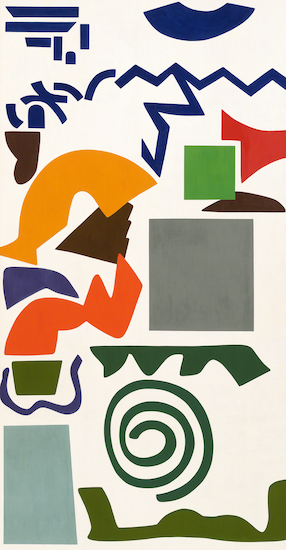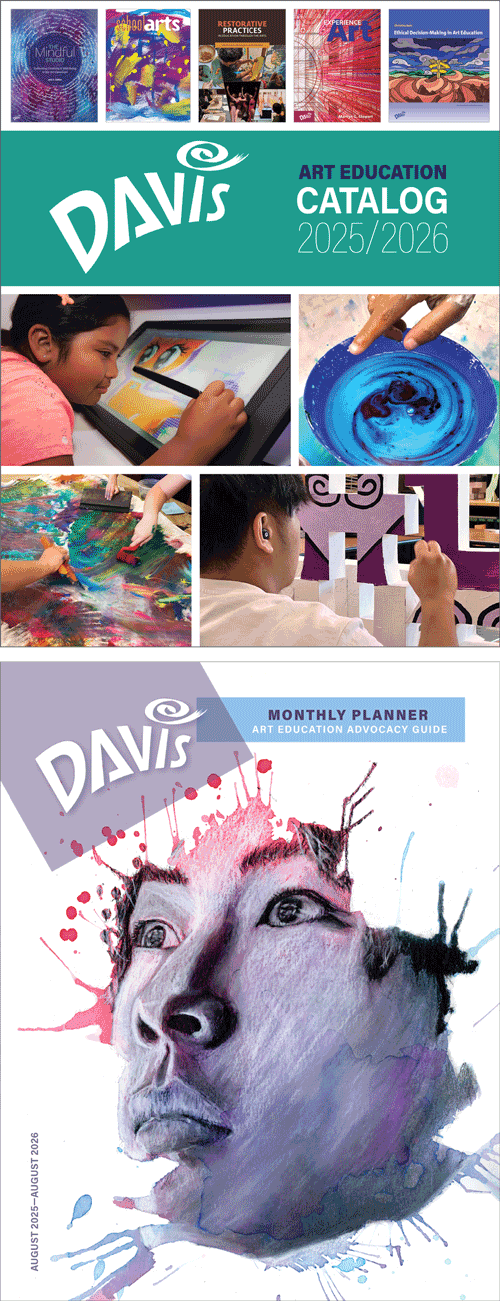Artist Birthday: Shirley Jaffe
Shirley Jaffe is a fascinating American abstractionist who briefly flirted with Abstract Expressionism, early on (1950s) believed it had become formulaic, and pioneered her own unique abstract vision.
Artist Birthday for 2 October: Shirley Jaffe (1923-2016 US)
 |
| Shirley Jaffe, Hop and Skip, 1987, oil on canvas, 219.4 x 114.6 cm The Museum of Modern Art, New York, © 2025 Shirley Jaffe / Artists Rights Society (ARS), New York (MOMA-P1433jfars) |
After 1968, Jaffe felt she needed to "simplify" her painting. She abandoned gesture and texture for an emphasis on color and geometry. The elements of the painting were restricted to geometric forms such as triangles, rectangles, zig-zags and squiggles which often overlap, but always stand against a dominant white ground. The canvas' surface was now more static, with the picture plane emphasized as flat. Hop and Skip demonstrates how inventive Jaffe was with her abstract forms, often verging on lyrical, but never controlled by narrative or perspective. For Jaffe, the shapes were inspired by her urban world, which mixes straight and curved lines, motion and rest.
Background
Many of the pioneer European modernist artists fled to New York when World War II (1939-1945) in Europe broke out. This exposed American artists hungry for change from the prevalent Social Realism in American art to a wide variety of abstraction, and Surrealism. American artists, disillusioned by what they perceived as the failure of traditional values and systems in the war, sought new ways of expression. They rejected any realistic or nationalistic tendencies, as well as the sterile formalism of such geometric abstractionists as Piet Mondrian (1872-1944). They were drawn to forms of abstraction that revealed individual expression, especially to the Surrealist work of Matta (1911-2000), who was in New York from 1939 to 1948. Matta introduced the New York artists to the idea of psychic automatism, creating from the subconscious. This would enable American artists to explore new forms.
By the mid-1940s, the leading artists of the New York school were exhibiting in galleries there. The Museum of Modern Art began acquiring their works, and in 1958 held a show called "The New American Painting." This show traveled to eight European countries, thus establishing for Abstract Expressionism (or, the New York School) an international reputation as a premier modernism movement. In 1948 several of the artists founded an informal school called "Subjects of the Artist." They were united in their belief that abstract art could express timeless, universal themes. Many of the women artists associated with Abstract Expressionism are termed "the second generation," denoting their perception as taking second place to the male "stars" of the movement.
Shirley Jaffe was born in Elizabeth, NJ. She received degrees from the Cooper Union School (1945), New York, and the Phillips Art School (1949), Washington, DC. Initial influences on her work included Vasily Kandinsky (1866-1944) and Pierre Bonnard (1867-1947). In 1949 she moved permanently to Paris, making only brief visits thereafter to the US. In Paris she associated with Joan Mitchell (1925-1992), Sam Francis (1923-1994), and Jean-Paul Riopelle (1923-2002), among others, who introduced her to Abstract Expressionism, of which they were considered "second generation."
In the 1950s, Jaffe's work was characterized by great gestural brush work in bright colors. The gestural surface barely allowed any forms to emerge from the pictorial space. Her first group show was in Paris in 1952. In the late 1950s, during a stay in New York, she came to the conclusion that Abstract Expressionism had become formulaic and stale, and she determined to find her own path. In Berlin between 1963 and 1967, she began a series of painting that displayed both turmoil and order, encapsulated in a complex geometric organization which would characterize her work for the rest of her career.

Comments